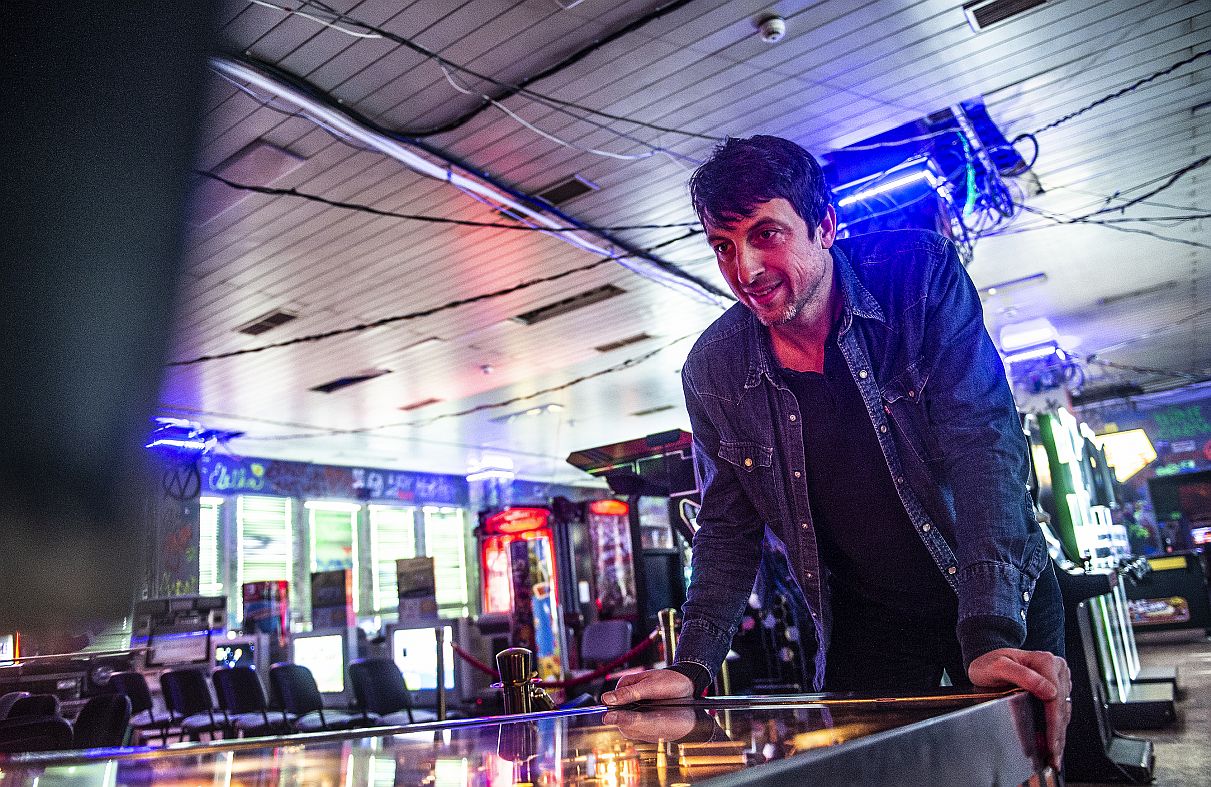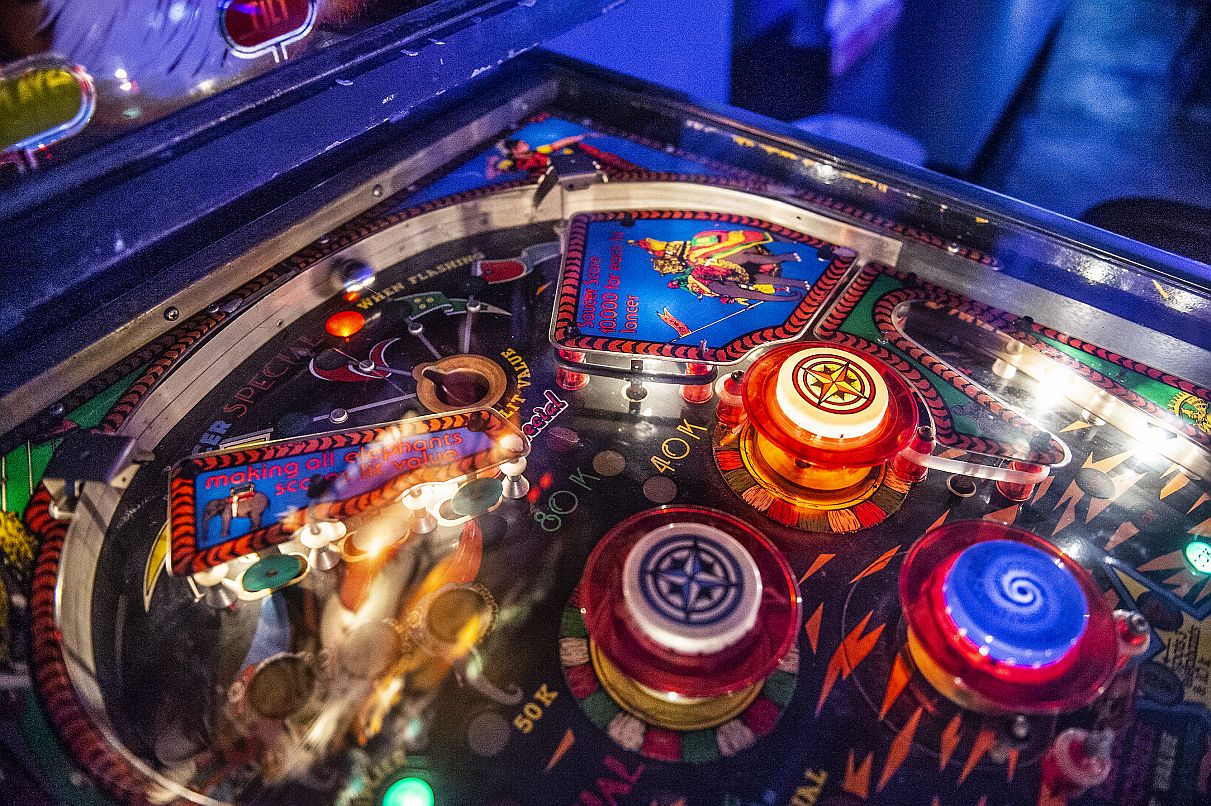My guest in this episode of Forum Radio is Jaroslav Švelch, an expert in media studies at the Faculty of Social Sciences at Charles University. Dr. Švelch is the author of a fascinating social history titled Gaming the Iron Curtain, published by MIT Press. Feb 7 sees the release of a new book called Player vs. Monster: The Making and Breaking of Video Game Monstrosity.

Dr. Jaroslav Švelch photographed at Prague's Cyber Arcade video games museum ahead of the launch of his new book with MIT Press.
In our interview we talk about the history of monsters, the role monsters play in video games and what they tell us about ourselves. We discuss aesthetics, transgressive elements, horror and comedy as well as how video games and video game narratives brought fantasy and science fiction into the mainstream.
Excerpts from our interview:
Why monsters?
“One of the reasons why I chose to write a book about monsters in video games was because of my own player experience going all the way back to the Nineties. All these monsters in all these games! But another was a call for a chapter in a book by American academics focusing on monsters in contemporary culture. They were looking for people to write about different aspects of monstrosity so I thought it could be a good idea to write about video games. No one else was doing that for them, so they invited me to write the chapter called Monsters by the Numbers and that was the start of my academic interest in that area of video games.”
Granddaddies of player vs environment
“Monsters haven’t had a long history when it comes to classic games such as chess, checkers, or various card games. Snakes & Ladders is perhaps one but even there the snakes are more of an obstacle than a monster. All the same, monsters began appearing in video games early on in the Seventies as what I call player vs the environment games began. Two games, the pen & paper RPG Dungeons & Dragons and the video game Space Invaders were hugely influential. Space invaders, for the first time, presented an opportunity where players could shoot back.”
Every culture has its own… but video game monsters are different
“What is seen as monstrous changes over time. Every culture has its monsters and they reflect present fears, beliefs, religion, and other aspects. Where video game monsters differ from their representation in literature or other media, is that in games they have to have a database of information underlying their design. The can’t be described as an ‘unspeakable or unimaginable horror or evil’ as H.P. Lovecraft might have put it, but have many more characteristics, statistics, health, and strategic weaknesses, which players might not know at first but gradually become apparent.”
All shapes and sizes
“There are a lot of go-to monsters in video games and one of the most common is the skeleton, whose appearance in games owes a lot to legendary animator Ray Harryhausen who had done Jason and the Argonauts and later the original The Clash of the Titans. Then you have zombies, still popular, most recently in The Last of Us, aliens, mutants of all kinds. One difference from literature, is that games pile on monster after monster and defeating them and getting rewards provides players with agency. If you take The Witcher stories by Andrzej Sapkowski, monsters appear but not in such numbers. That is a sharp contrast from the video game series.”
The impact of video games on broader culture
“Video games have definitely been a mediator between geek and mainstream culture. Few people knew about The Witcher in the West until Witcher III: Wild Hunt proved hugely successful as a video game. It was only after that, that the stories got picked up for the TV series on Netflix. I don’t think you would have seen that if it hadn’t been for the huge success of the game.”
In-game ethical conundrums for players
Games give us a space for a reflection on ethics and monsters help in that respect. Many games often question our actions or have an environmental or ethical message about killing other species. A famous example is Shadow of the Colossus in which the hero has to kill these amazing beautiful monsters – colossi – to try and resurrect his girlfriend. You have to kill sixteen of them in the game and you have to kill them all. It’s a pretty gruesome thing and at some point you realise that you’re not really doing the right thing, that YOU are the monster. This is clear even in the visual representation: the character grows more and more pale. There is no other way to complete the game, but without giving anything away, it’s clear there is no simple resolution and there is no simple happy ending.”

Visiting an arcade museum is about more than just monsters and classic video games: who says you can't be a pinball wizard, too?
| Forum Radio - Interview / Episode 11 / Jaroslav Švelch - So many monsters to defeat! / Runtime: 29 minutes and 13 sec. |
Dr. Jaroslav Švelch is an assistant professor at Charles University in Prague. He is the author of the monograph Gaming the Iron Curtain: How Teenagers and Amateurs in Communist Czechoslovakia Claimed the Medium of Computer Games (MIT Press, 2018). He has published work on history and theory of computer games, on humor in games and social media, and more. Švelch's newest title with MIT Press, coming out on 7 February, is Player vs. Monster: The Making and Breaking of Video Game Monstrosity. To learn more about his work feel free to visit his website.




























